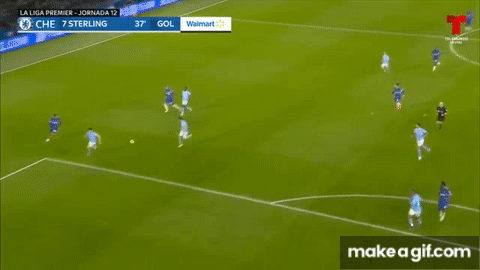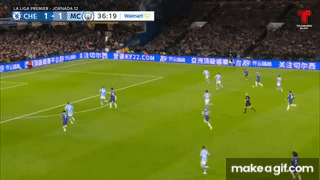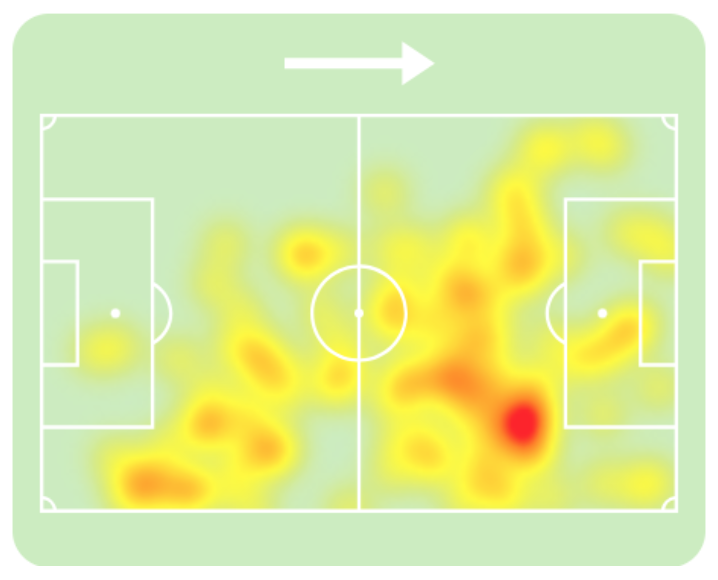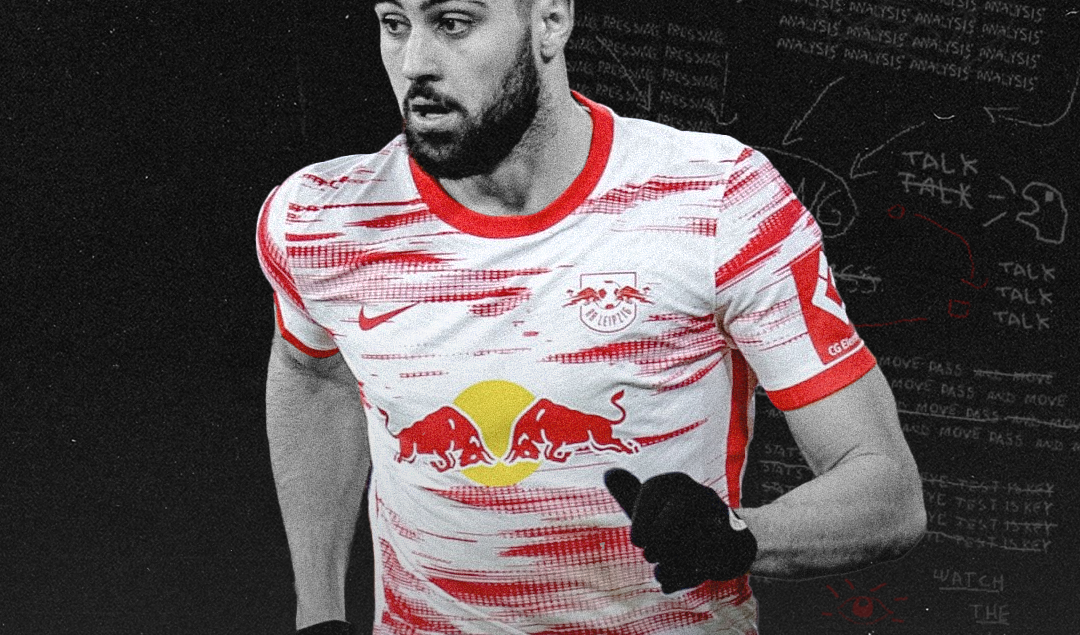Breaking the Mold: Position of the Season 2023/24: Part Two
“Little Pep”: the late-blooming lynchpin of City’s title defense
After winning a historic treble of Premier League, FA Cup and Champions League in 22/23, Manchester City could have afforded to rest on their champagne-soaked laurels in the 2023 summer transfer window. Relentless in their pursuit of dominance in English football, however, they went out and signed the most expensive defender of all time instead.
Croatian centerback Josko Gvardiol was one of football’s most sought-after prospects last summer. His imposing frame, ability on the ball, and imperious performances in central defense for both RB Leipzig and the Croatian national team had turned heads across Europe. City won the race to sign Gvardiol, shelling out a record-breaking 90 million euros for his signature.
A somewhat fitting move given that the defender’s excellent reading of the game and similar sounding last name had garnered him the nickname “Little Pep”, after City manager Pep Guardiola, among his Croatia teammates. Bearing in mind his massive transfer fee and the prodigious talent he’d showcased previously as a centerback, it was somewhat surprising to see Gvardiol starting as the left fullback in a back four for City on the opening day of the 23/24 season.
Gvardiol’s debut at left back was no fluke either. City had spent more money than any club ever had on a defender to play him ostensibly out of position. In Guardiola’s system, Gvardiol was tasked with playing as the left fullback in City’s out-of-possession back four and as the left outside centerback of City’s three-man defense in possession.
For spells throughout the first half of the 23/24 season, Gvardiol seemed to struggle coming to terms with this admittedly complex role at his new club. His outing against Chelsea at Stamford Bridge, for instance, highlighted some of the lapses limiting his ability to adapt. The match ended in a thrilling 4-4 draw, but considering the number and manner of goals conceded by both sides, it is likely not a match that any of the defenders involved look back on with much fondness.
Gvardiol, in particular, struggled to stem the flow of Chelsea’s attack down City’s left flank (Chelsea’s right) throughout the match. Chelsea scored to go ahead 2-1 on 36 minutes after City’s defense failed to deal with a long ball played by Chelsea goalkeeper Robert Sanchez.
The ball eventually broke for Chelsea midfielder Enzo Fernandez, who quickly shifted it out to his teammate Cole Palmer in an attacking position on Chelsea’s right. Gvardiol and the rest of the City backline scrambled to regain their defensive shape as Chelsea mounted their counter.
With Chelsea fullback Reece James racing beyond Palmer on the overlap, Gvardiol stepped outside to block off James’s run. However, in his attempt to contain the Chelsea fullback, he turned his back on the ball and left a gap in City’s defensive line in the channel inside him. Palmer slid a ball right into the space that Gvardiol had left open, and though the City defender did his best to recover, it was too little too late.
James was able to step inside, nick the ball away from Gvardiol, and fire a pass across the face of the goal for Raheem Sterling to tap in at the back post (see Figure 4). In what must have been a nightmare end to the first half, Gvardiol was exposed again just three minutes later. Similar interplay between Palmer and Chelsea midfielder Moises Caicedo drew Gvardiol out of position for James to mount another attacking charge down City’s left flank.
Figure 4.) Gvardiol gifts Chelsea a go-ahead goal


Gvardiol took a poor initial angle trying to close down James’s run in the lead-up to Sterling’s goal. Had he maintained a more open body position as he shuffled across to James, he would have been able to keep an eye on both the ball and his man, making it easier for him to adjust accordingly as the play developed. Gvardiol’s errors in these instances were slight and exploited by James and Palmer, who are among the Premier League’s best at their respective positions.
At the same time, these mistakes are fundamentals of defending in wide areas and indicative of a player adapting to a new role. Over the course of City’s season, Gvardiol came to cut these mistakes out of his game and rattled off a series of dominant performances, as “Big Pep’s” juggernaut picked up steam en route to a fourth consecutive Premier League title.
It is commonly touted that players take some time to adapt to Guardiola’s approaches after joining Manchester City and that as a result they generally start to show their best form in their second season. This narrative seems to fit with the trajectory of Gvardiol’s time at City so far, and similarly describes another stalwart of City 23/24 defense.
Manuel Akanji: the epitome of City’s centerback profile
Manuel Akanji is one of the more unsung transfer additions City have made in recent seasons. He was signed on deadline day in the same window as Erling Haaland for a mere 18 million euros from Borussia Dortmund. Both factors likely contributed to the lack of fanfare around Akanji’s arrival. The culmination of Akanji’s first season at the Etihad more than made up for the pomp missing from his Manchester welcome though, as he etched his name into City history by playing a full 90 minutes in the Sky Blues’ Champions League triumph over Inter Milan last June.
Similar to Gvardiol, Akanji arrived at City from the German Bundesliga having played the majority of his games at centerback for both Dortmund and the Swiss national team. In the two seasons since then, however, Guardiola has used Akanji in a myriad of positions across the backline with the Swiss seemingly going from strength to strength in each new role he has taken on.
He’s regularly featured in the same outside centerback role as Gvardiol on either side of the City defense, where his pace, strength and adeptness in 1v1 situations have become indispensable assets to Guardiola’s defensive structure. Akanji has also deputized in more of a sweeper role on occasion, playing as the deep lying defender at the heart of City’s back three in possession.
The 4-4 draw against Chelsea was a significant outing for Akanji as well as it was one of the first occasions in which Akanji played what had previously been dubbed the “John Stones role”, that is, the central defender who steps out of the backline and into midfield when City have possession.
Though City’s defense was porous on the day Akanji chipped in with a goal, escaping his marker to nod home after play broke down from a City corner, and performed well enough to reprise his Stones substitution act in several matches later on in the season. The versatility and positional flexibility that Akanji has shown already in his brief time since joining Manchester City exemplifies what Guardiola seems to prize most in his defenders at present.
Given the high number of games that City expect to play every season, making deep runs in four competitions, players who can step into various positions and roles without missing a beat are especially valuable to Guardiola and other managers keen to challenge for trophies on multiple fronts. The prioritization of flexibility for the sake of squad rotation goes hand-in-hand with the shifting tactical expectations of defenders as well.
Players who can adapt to the demands of increasingly hybrid defensive roles are also able to more easily step in at other points along the backline when their managers are in a pinch. City’s defensive approach seems to be moving away from specialist distinctions like fullbacks and centerbacks, and more toward generalist defenders who both fit the system on the pitch and add more effective squad depth.
Akanji is a leading example of this profile in City’s defense, but definitely not the only one. Nathan Ake, who played as both a left fullback and left centerback in traditional back fours before joining City, has been similarly moved around the back line as needed to great effect.
Versatility finds its fault
While Guardiola’s approach of using his hybrid centerbacks in midfield and wide areas to dominate City’s opposition has often been lauded as all-conquering, it does come with some inherent drawbacks. City’s Champions League elimination this year, particularly the second leg of their quarterfinal against Real Madrid in April, highlights some of these potential limitations.
The match ended in a 1-1 draw, 4-4 on aggregate, with City ultimately succumbing to defeat on penalties by score of 4-3. Much of the post-match reaction to the game revolved around City’s dominance in terms of territory, possession and chances. City spent most of the game camped in Real Madrid’s half, had 67% of the ball possession and amassed an expected goals tally of 2.74 to Real Madrid’s 1.44.
However, they were unable to break down Real Madrid’s defense to find a crucial winner (Sofascore). Looking at Akanji’s heat map for the game may give some indication as to why City’s dominance wasn’t ultimately telling (See Figure 5).
Figure 5.) Akanji heatmap from Champions League quarterfinal second leg vs. Real Madrid

The heatmap above looks like what one would expect to see from a winger or attacking midfielder. It is indicative of a Franz Beckenbauer-esque performance from Akanji, roaming forward to support his team in attack. However, while Akanji is an incredibly skilled footballer in his own right, given the array of attacking talent City have at their disposal, they probably would have preferred to have one of their more creative players getting into such promising attacking positions. Real Madrid’s defensive approach suggested they were mindful of this as well.
In several instances, they seemed to allow Akanji to have the ball under less pressure in these areas than they would have if it were Kevin De Bruyne or Phil Foden on the ball, for example. This is where the merits of pushing defenders into more advanced areas may start to break down. The positional advantage of having more players higher up the field is only valuable if it translates to additional chances created and goals scored.
While there’s no doubt that this has generally been the case for Manchester City and Arsenal over the last two seasons, at the end of the day, centerbacks are still centerbacks, even if they’re playing like wingers. Players who have developed as centerbacks throughout their careers can only expand their skill sets so much, especially as compared to players who have had similar developmental experiences as attackers.
On another night things could have ended differently. City faced Real Madrid in a Champions League home second leg match in 22/23, employing the same advanced centerback approach, and romped to an emphatic 4-0 victory. Though as Real Madrid celebrated their victory in this chapter of what is becoming an epic of Champions League encounters, Guardiola’s usual personnel masterstroke felt more analogous to forcing square pegs in round holes.
By: Ade Samuel / Linkedin: https://www.linkedin.com/in/ade-samuel-42a165172/
Featured Image: @GabFoligno / Boris Streubel – Getty Images
